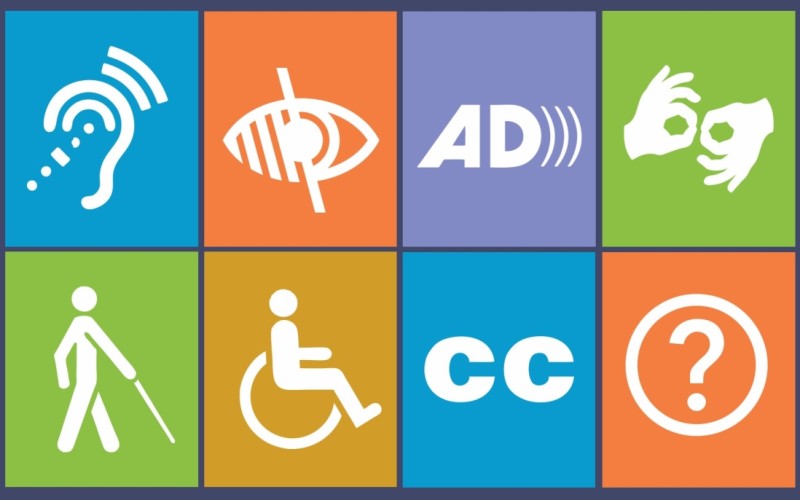In 1973, Section 8 of the Rehabilitation Act put laws in place to make the internet more accessible for the 55 million Americans, at that time, who lived with disabilities. If an organization receives funding from the federal government, it must meet certain accessibility standards.
There has historically been some confusion about how the law should be applied to private businesses vs. public owned organizations in regards to web accessibility. Alongside the Rehabilitation Act, the Americans with Disabilities Act (1990) has also played a role in strengthening the law around enforcing web accessibility.
In 2018, the Web Content Accessibility Guidelines (WCAG) were updated from their 2.0 status to 2.1, accounting for a greater variety of those with accessibility needs online such as those with poor vision or learning disabilities.
As the law continues to strengthen around website accessibility, it is important to stay ahead of the game by meeting web accessibility guidelines as put forth by WCAG.
Thinking about Web Accessibility
There are permanent and temporary disabilities, seen or unseen. They may be physical or cognitive, singular or they may come in pairs. Ensuring your website is accessible will help you reach as many people as possible.
The best way to approach web accessibility is to recognize individual inherent bias. Consider conducting user surveys to learn which tools or assistive technology (AT) they use, barriers they face or how their behavior changes. To get a glimpse at the diverse array of users and their needs on the internet, the W3 has put together a resource where you can check out their stories.

It’s important to note, in 2019 the Click Away Pound Report, a survey of consumers with disabilities, found that 63% of respondents were AT users, and more users were turning to screen magnifiers and speech recognition software, among other AT. It is likely to see increases in speech recognition as devices such as Siri or Alexa continue to gain popularity.
Additionally, the Click Away Pound Report found that 69% of users with access needs would leave a problematic website, looking elsewhere if at all possible.
Implement Accessibility on your Website
Ensuring your website is accessible is not something that can be done once and then it is done.
It is imperative to get as many people within your organization as possible interested in participating to maintain your site’s accessibility. By taking a proactive approach to accessibility you protect your pre-existing plans and keep on time and on budget for those plans. Web accessibility guidelines can help direct where you should focus your attention.
Below are some web accessibility tips you can meet on your own:
- Make sure that pictures, video content, and merchandise have useful and descriptive alt-text. It must explain what is there so that screen readers can access the information.
- All video and audio clips must include captions, subtitles or some sort of transcript.
- 🌶 For advice on how to make your videos accessible you can read our article here.
- Consider providing an audio recording of text, whether that be of a published blog or of a resource.
- If you include PDFs on your site, ensure they are optimized for accessibility.
- Use a third-party plugin to improve your site’s overall accessibility.
- Check your site to ensure content is not using outdated HTML to distinguish bold and italic content. This will require some comfort with reviewing the HTML, as you will need to check to ensure there is no < i > < / i> or < b > or < / b >, minus the additional space.
Accessibility improvement tips that may require assistance from a developer:
Depending on the size of your site, and how it was developed, you may need the assistance of a developer for the following tasks. Some are best applied site-wide while others could be applied on a more selective basis.
- If there is anything with motion, a .gif, .mov or slider, there must be a way to stop automatic play.
- Ensure all hyperlinks are underlined. While you can add a different font color for hyperlinks, you must not only rely on the difference of color to make them accessible. A deep blue color is still regarded as the most effective, as most people associate this with a link.
- 🌶 Avoid bright font colors or those that don’t stand out against your background.
- Make it clear that the word or phrase will take them to another page. Check out this before-and-after demonstration to see the difference it can make!
- Users should be able to tab through your website and navigate without a mouse. If using your keyboards tab does not let you access your complete menu and all content and links within you may need the assistance of a developer to make fixes.
There are many ways to implement accessibility best practices, using the above mentioned, without the need of a design and or development team. Additionally many of the items listed above will help your organic traffic grow by being optimized for search engines.
What accessibility challenges has your organization faced? Let us know by tweeting us @AmDeeLLC!
Also, be sure to download our PDF presentation on accessibility, including these tips and others on how to improve your web accessibility.
beginners guide improving seo improving the user experience web accessibilityYou May Also Like

Thomas Bertram (T. Bert) Lance famously said, "If it ain't broke, don't fix it." Unfortunately, T. Bert Lance couldn’t foresee the future. He didn’t know that over 94% of Americans would be on the internet by 2024. If your website doesn't receive periodic updates or isn't accessible, users can become…
read more >
The average American now spends over half of their day staring at a screen. A recent Nielsen report reveals that adults in the United States spend over 12 hours a day on digital devices. This includes time spent using apps, browsing the web on smartphones, streaming services, and using desktop…
read more >
